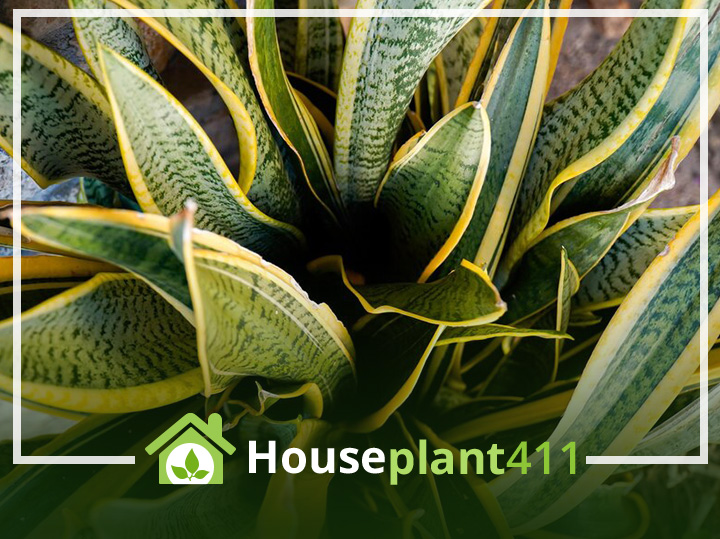Snake plants, also known as mother-in-law’s tongue and Sansevieria trifasciata, are easy to care for. They’re a popular houseplant because they’re durable and easy to maintain; however, if you notice your snake plant turning yellow or dropping its leaves, it could signal that something is wrong with your plant. Here are some common reasons snake plants turn yellow:
Overwatering
Overwatering is the most common problem when it comes to yellowing snake plants. Overwatering causes roots to rot, leading to yellow leaves and eventual death. When you water your snake plant, do so only when the soil is dry down an inch or so (soil should never be soggy). If you don’t have a moisture meter for measuring soil moisture content, stick your finger into the soil; if it’s dry one inch down, it’s time for some water!
You may also see yellow leaves if your snake plant is getting too much light—this can happen if you place yours indoors near a window where sunlight filters in through sheer curtains or blinds. Snake plants do best in bright indirect light or full shade outside; they need indirect light indoors because they are very sensitive to direct sunlight (which will make them turn brown quickly).
Root Rot
Root rot is a fungal infection of the roots that occur in snake plants that are not planted in porous soil. Symptoms include yellowing of leaves and stems, wilting, and brown spots on the leaves. To prevent root rot: make sure your snake plant is in well-draining soil; water only when the soil is dry; and be aware of other possible causes such as over-watering or under-watering.
Too Much Direct Light
If your snake plant gets too much direct sunlight, the leaves will burn and turn yellow.
The best way to determine whether your plant is getting enough indirect light is to compare it to another plant that gets the same amount of light as the snake plant. If they look similar in appearance, then they probably are receiving sufficient light levels. You may want to consider adding a little artificial lighting if you feel unsure about this step or if you want an even greener hue on your snake plants because they’ll get plenty of natural daylight anyway!
If your snake plant isn’t getting enough indirect light, don’t worry! It’s a simple fix—just ensure that there isn’t any direct sunlight hitting its leaves for extended periods each day (only a few minutes is okay). Also, check out our guide on how much water should go into maintaining healthy potted plants so that you’re sure not to overwater them either!
Not Getting Enough Light
Not getting enough light can cause the leaves of your snake plant to turn yellow. If you have a snake plant that’s been in a shady area for months, this is likely why its leaves are turning yellow.
If you don’t know what kind of light your plant needs, ask an expert before moving it into more direct sunlight.
Pests
Snakes are especially prone to spider mites, mealybugs, aphids, whiteflies, thrips, and scale. Most of these pests can be removed by hand-picking or using a strong spray (you can also pull out the plant and wash it off). If you do find that your snake plant has one of these pests in it (or if you want to prevent this from happening), it may be time to use an insecticide soap or horticultural oil on your plant.
Nutrient Deficiencies
If you’re not sure how to fertilize your snake plant, don’t. Snake plants are very hardy and can go for months without any additional fertilizer if they don’t seem to grow as quickly as you’d like. If you do decide to feed your snake plant, make sure that you use a compost tea or diluted fish emulsion rather than chemical fertilizer. The chemicals in these products actually hurt your beloved houseplant and may even kill it!
Fungal Diseases
Fungal diseases are the most common cause of snake plant leaf yellowing. To prevent these types of infections, it’s important to understand what causes them and how they can be treated.
There are many different types of fungal diseases—some more serious than others—but all can cause snake plant leaves to turn yellow, brown or even black if left untreated for too long. The good news is that there are several methods you can use at home to help your plants fight off any fungal infections they may have picked up during their time indoors (or outdoors).
Cold Drafts
If your snake plant is getting a bit pale and droopy, it could be due to cold drafts. These tropical plants are not cold-hardy and will turn yellow and drop their leaves when subjected to low temperatures. To stop this from happening, keep your snake plant away from windows or doors; if possible, place it in an area without air circulation.
Temperature Fluctuations
If you’ve recently moved your snake plant or the plant has recently been removed from the window, it can shock the plant’s system. The temperature change will cause the yellowing. In addition to moving them around, opening and closing windows can cause temperature fluctuations that could also lead to yellowing.
Temperature fluctuations are also common when turning on air conditioning during hot summer months, so keep an eye out for this potential culprit!

Pay Attention to Your Snake Plant’s Needs.
Knowing how to care for your snake plant and keep it healthy is important, but that doesn’t mean you need to be a professional gardener. The most important thing is to follow the steps outlined here and pay attention to your snake plant’s needs. So if you’re looking for an easy houseplant that won’t take up too much time or money, this one is a great choice!

